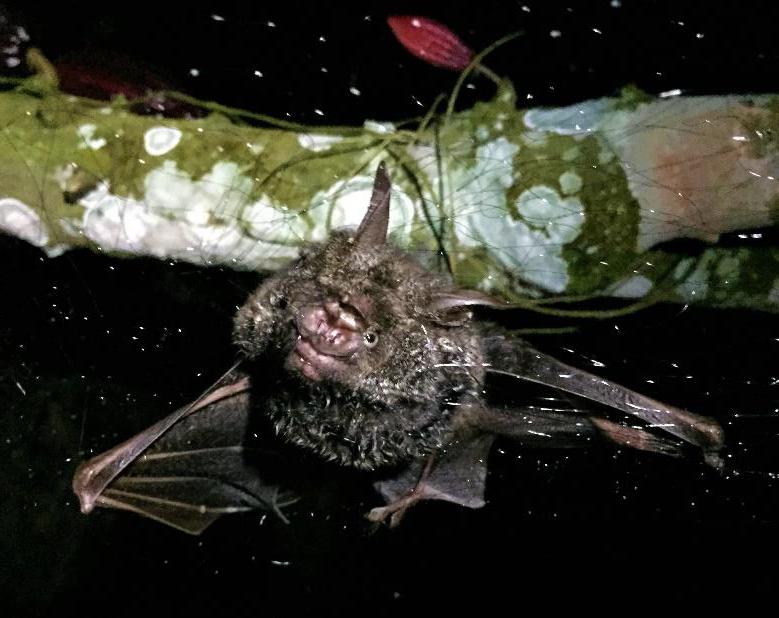Diogo Ferreira
Sub-Saharan Africa is home to one of the largest expanses of tropical rainforest in the world. Despite this, about 70% of the world’s chocolate is grown in Africa and an increase in production is expected. Cocoa insect pests cause losses of hundreds of millions of pounds annually. Bats are insect predators that play a major role in pest suppression. By using an exclusion experiment where we block the access of bats to cocoa trees, we will quantify how the consumption of pests by bats affects cocoa crop yield and ultimately estimate the annual savings for farmers. Additionally, by providing a monetary value for animal ecosystem services, and by identifying the bat species responsible for that service, farmers and policymakers should be encouraged to implement suggested management measures that protect bats responsible for those services, which in turn will act as umbrella species by protecting the rest of the bat communities.

Cyclops Roundleaf Bat (Hipposideros cyclops) trapped in mist net. © Diogo F Ferreira.
Agricultural expansion is the main driver of tropical deforestation. Most agricultural expansion in the 21st century will take place in South America and Sub-Saharan Africa, home to the two largest expanses of tropical rainforest in the world. However, nearly all research focused on the balance between agriculture and biodiversity has been conducted in temperate regions.
Agroforestry, an agricultural technique where crops are grown under native shade trees, may offer a path forward for farmers to maintain productive harvests while sustaining the ecological benefits of native forest. Cocoa (Theobroma cacao) is one of the most valuable tropical crops and is typically planted under shade trees. Although cocoa is considered the fastest expanding export-oriented crop across Africa, very few studies have investigated the responses of the unique Afrotropical biodiversity to cocoa production. Furthermore, cocoa pests (primarily Hemiptera and Lepidoptera) can cause losses of more than £350 million annually, and these insect orders are commonly eaten by bats.
Bats are responsible for numerous ecosystem services worldwide. They are of great importance for the suppression of insect populations, including agricultural pests. In the only study to date focusing on this group in cocoa plantations, researchers in Indonesia found by conducting an exclusion experiment (i.e. by covering cacao trees with nets to block the access of specific predators to insects on trees) that insect predation by bats and birds increased yield by 31% and saved farmers £538/ha annually. Although this shows the potential of bats as cocoa pest suppressors, the African pest community is entirely different from that found in South East Asia and no study has yet been conducted in Africa.
The aim of this project is to use an exclusion experiment to understand the role of bats in the suppression of cocoa pests in Cameroon, Africa. For my PhD, I have been using mist-nets to sample bats in 30 cocoa farms across Cameroon to investigate how their communities are affected by the different management types (e.g. shade and understory cover). With this project we will be able to create a bridge between the ecological data that we have been collecting and the social-economic component of each cocoa farm.
Hence, the study is divided into two main objectives:
1) Quantify the economic value of bat pest suppression in cocoa plantations located in three different landscapes in Cameroon.
2) Develop a management plan to promote agro-ecological practices that foster bat populations and human wellbeing.